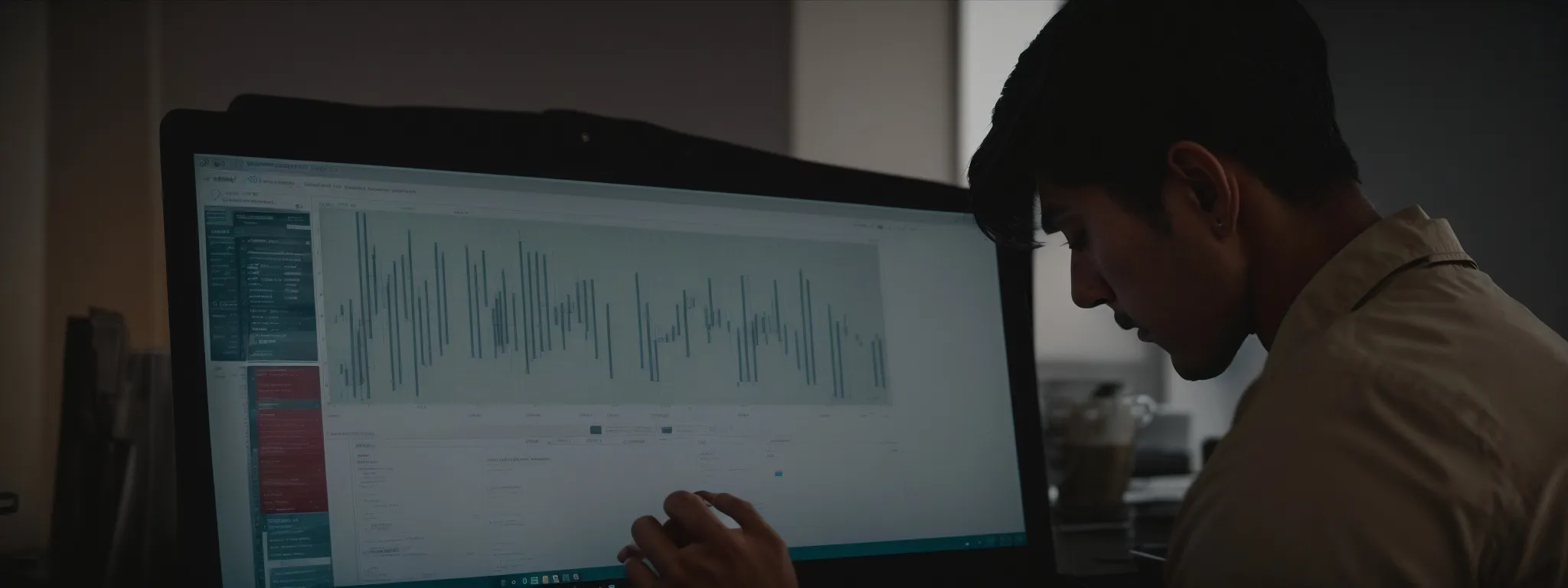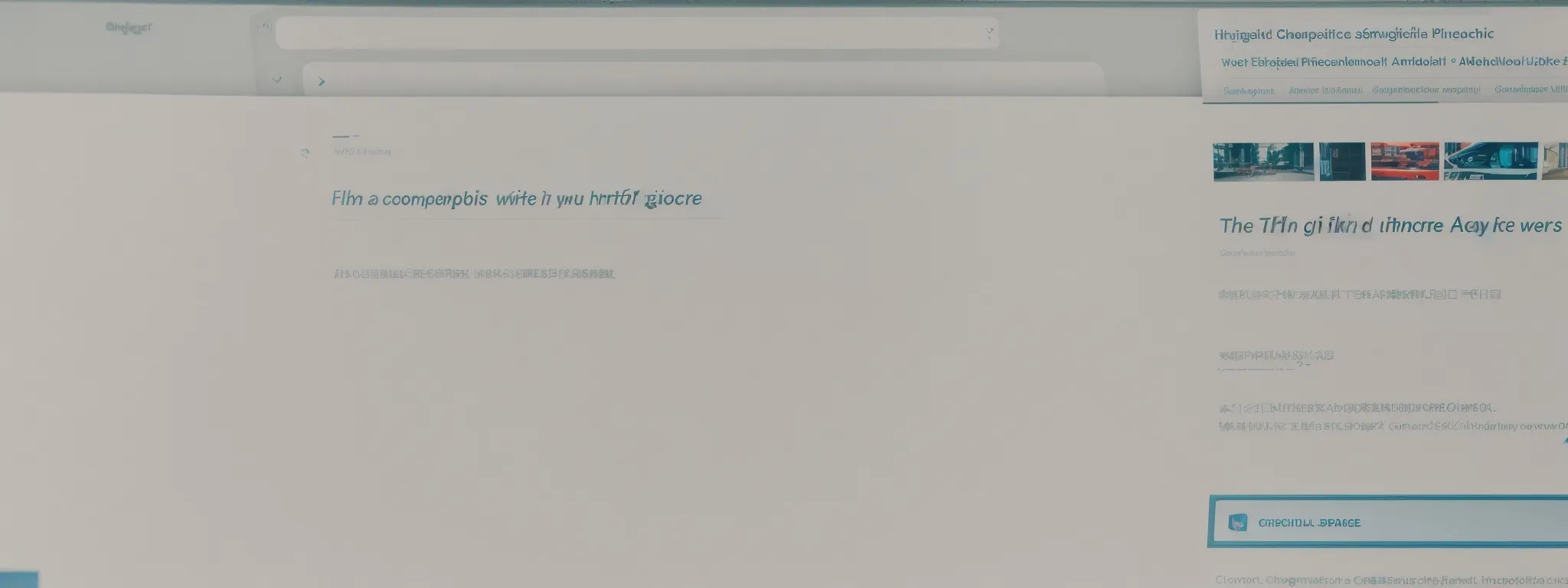Imposters Are Reportedly Using Fake Takedown Requests for Negative SEO Purposes
Emerging Threat: Fake Takedown Notices Targeting Legitimate Content for SEO Manipulation In the intricate web of digital marketing, a new menace looms: fake takedown notices designed to […]
Emerging Threat: Fake Takedown Notices Targeting Legitimate Content for SEO Manipulation
In the intricate web of digital marketing, a new menace looms: fake takedown notices designed to game the SEO system and manipulate search results.
These fraudulent claims pose not just a threat to the integrity of online content but also a significant challenge to the SEO strategies of legitimate businesses.
Website owners and digital marketers alike must become adept at recognizing and countering these spurious accusations to safeguard their online presence.
Armed with knowledge and vigilance, they can protect their content from being wrongfully removed and their SEO efforts being undermined.
Keep reading to unravel the dynamics of these deceptive practices and learn how to fortify your digital assets against them.
Key Takeaways
- Fake DMCA Takedown Notices Are Used to Manipulate Search Engine Rankings
- Website Owners Must Be Vigilant and Proactive to Protect Their SEO Investments
- Knowledge and Preparedness Are Key Defenses Against SEO Manipulation Scams
- Legal Repercussions Exist for Those Who Issue Fraudulent Takedown Notices
- Collaboration Between Platforms Enhances Protection Against These Fraudulent Practices
Understanding the Mechanics of Fake Takedown Notices

In the intricate realm of digital content, where visibility equals value, a new form of malfeasance has arisen—fake takedown notices.
Perpetrators of such duplicity exploit copyright law intricacies, not in the pursuit of justice, but to cripple competition and skew search rankings for their benefit.
These devious acts involve meticulously crafted notices that masquerade as legitimate legal demands, targeting genuine content with the ulterior motive of SEO sabotage.
Grasping the mechanics of these fraudulent notices is paramount for safeguarding one’s digital assets.
This introduction serves as the preamble to a deeper exploration of what drives these deceptive actions, the stepwise process of constructing a feigned DMCA complaint, and the method by which these cybercriminals select their victims—legitimate content creators unknowingly caught in the crosshairs of SEO warfare.
Exploring the Motive Behind SEO Sabotage
Within the tumultuous landscape of online content, positioning on search engines can mean the difference between obscurity and prominence. Consequently, some entities engage in underhanded tactics like falsifying DMCA takedown notices, aiming to illegitimately remove rival content from search results, thus manipulating their own SEO standings.
This act of digital subterfuge serves as a testament to the lengths to which some will go to gain an unearned advantage. By deploying fake takedown notices, they attempt to undermine the search presence of competitors and reap the benefits of improved rankings unchallenged:
- Identify a thriving competitor with superior search visibility.
- Generate counterfeit takedown requests to target their legitimate content.
- Exploit legal processes and search engine protocols to suppress competitor’s content unfairly.
- Ascend in search engine rankings as rival content gets unjustly penalized or removed.
Such nefarious strategies, while unethical, highlight the critical importance of Vigilant SEO Strategies and countermeasures to protect the integrity of legitimate businesses operating within the digital space.
Decoding the Process of Issuing a Phony Notice
The crafting of a phony notice is a deliberate and deceptive series of actions, requiring a counterfeit claimant to feign authority and authenticity. Complex by design, the goal is to create a document that mirrors the formality and urgency of a legitimate DMCA takedown notice, thus deceiving the recipient into compliance.
Upon the creation of such a fraudulent document, the next critical step involves submission to the relevant parties: typically, web hosts or search engines. By presenting the notice as if it were a genuine claim of copyright infringement, the impostors aim to trigger automatic compliance mechanisms that lead to undesired content suppression:
- Prepare a falsified document that closely resembles a valid legal notice.
- Send the forged takedown notification to unsuspecting service providers and content platforms.
- Swiftly provoke unwarranted content removal, directly impacting the victim’s online presence and SEO ranking.
Identifying Targets: How Legitimate Content Is Chosen
The calculus behind choosing a target for fake takedown notices is governed by a simple, yet malicious, rationale: to dethrone content that garners high search engine rankings. Attackers scrupulously analyze search result pages, pinpointing content that not only outperforms their own but also holds substantial dominion over coveted keywords and traffic.
Once these imposters identify a steadfast competitor, their ploy begins. Unlike ordinary users absorbed in content consumption, these schemers extract operational insights to orchestrate their attack, carefully selecting high-value digital assets whose removal would most benefit their SEO positioning.
The Impact of Fraudulent Claims on Website Owners

As companies strive for visibility in an increasingly congested digital marketplace, website owners face an insidious threat: fake takedown notices.
These deceitful maneuvers not only create immediate disruption but can also inflict enduring harm to a site’s search engine optimization efforts.
A single fraudulent claim can trigger a cascade of detrimental effects, from urgent content removal to lasting damage to a brand’s online presence.
In this context, understanding how to shield one’s digital assets from such unwarranted accusations becomes not just beneficial, but essential for maintaining the integrity of one’s online footprint.
Immediate Repercussions of a Takedown Notice
The swift issuance of a falsified DMCA takedown notice can throw a website owner into immediate turmoil. Such a notice demands prompt action, often leading to hasty content removal to avoid legal confrontation, inadvertently compromising the site’s content quality and availability.
Moreover, even when the targeted content is swiftly reinstated after proving the notice’s illegitimacy, the website’s search engine rankings may already suffer. The temporary absence of content can skew algorithmic perceptions, diminishing the site’s authority and eroding the trust of search engines like Google, with long-lasting implications on visibility and traffic.
Long-Term SEO Damage From Illegitimate Claims
The insidious nature of fraudulent DMCA takedown notices extends beyond immediate disruptions, inflicting long-term damage on a website’s SEO health. Unwarranted removals contribute to an erosion of search engine trust, as algorithms begin to associate a given domain with instability and potential legal issues, inadvertently suppressing legitimate rankings and organic growth prospects.
Recovery from such malicious acts is not simply a matter of content restoration; it requires a meticulous restoration of reputation and recalibration of SEO strategies. Website owners often find themselves compelled to invest additional resources into rebuilding their digital standing, working against the tarnish left by counterfeit legal challenges that have misrepresented their compliance with copyright norms.
Protecting Your Content Against Unwarranted Accusations
Website owners can employ proactive measures to guard against the havoc wreaked by Counterfeit Takedown Notices. It is crucial to maintain meticulous records of copyright authorizations and any permissions related to content, which serve as concrete evidence against false claims.
| Preventive Measure | Detail | Benefit |
|---|---|---|
| Copyright Documentation | Keep precise records and licenses | Facilitates swift rebuttal against fake notices |
| Content Monitoring | Regular audit of content distribution | Early detection of illegitimate takedown activities |
| Legal Readiness | Prepare a response protocol in advance | Ensures a rapid and effective legal counteraction |
Implementing a robust surveillance system to monitor the use and distribution of their online materials enables website owners to quickly detect unauthorized removals and respond appropriately. This vigilant approach paves the way for immediate action upon receiving a fraudulent notice: addressing the issue head-on, thus sidestepping a potentially prolonged debacle and securing their SEO investments.
Spotting the Signs of a Fake Takedown Notice

As digital landscapes burgeon, the emergence of counterfeit takedown notices poses a significant threat to the sanctity of legitimate content and its Search Engine Optimization (SEO) standings.
Vigilance becomes paramount as website owners navigate this treacherous terrain.
Recognizing a falsified takedown notice necessitates a discerning eye, particularly as imposters refine their methods of deception.
In this subsection, attention turns to the crucial task of identifying counterfeit notifications designed to manipulate SEO results.
Discerning professionals must keenly analyze the nuances of email exchanges, appraise the minutiae of request details, and thoroughly verify the legitimacy of the claiming entity.
These defensive measures form the bulwark against the pernicious effects of SEO-related malpractice in today’s highly competitive online environment.
Analyzing the Warning Signs in Email Correspondence
In the trenches of online brand management, email correspondence serves as the earliest line of defense against fake takedown notices. Careful scrutiny of these communications is essential; red flags include unusual sender email addresses, generic content that lacks specific detail, or aggressive language urging immediate action.
Such insidious attacks are often betrayed by their own correspondence, revealing through subtle inconsistencies an intent to deceive. Professionals must weigh the sender’s credibility, the precision of infringement claims, and the overall tone to discern the authenticity of the notice:
- Evaluate the professionalism and domain of the sender’s email address.
- Look for detailed infringement accusations specific to the content in question.
- Consider the tone; authentic legal communications typically avoid unduly coercive language.
The Red Flags in Takedown Requests’ Details
When examining the particulars of takedown requests, certain anomalies may signal malicious intent. A fake notice often features vague descriptions of the supposedly infringed content, lacks specific URLs, or cites non-existent or irrelevant copyright laws as a basis for the request.
A keen observer will note discrepancies in the dates mentioned within the notice or a mismatch between the reported content and the complainant’s alleged copyright portfolio. Such Mismatched Details Are Telling Signs that the takedown notice may not only be insincere but purposely designed to manipulate SEO outcomes for the issuer’s benefit.
Verifying the Authenticity of the Claiming Party
Vigilance in the verification process can distinguish between genuine legal action and a strategically placed SEO trap. When doubt shrouds the identity of a claimant issuing a takedown notice, due diligence dictates a thorough investigation into the claimant’s background, assessing the legitimacy of their identity and their legal standing to initiate copyright claims.
Practitioners in digital content protection advise a comprehensive approach: contacting the claimant directly, seeking professional counsel, or consulting the U.S. Copyright Office’s database to confirm the registration status of the work cited. These proactive steps can help reveal the true nature of the claiming party and safeguard a website’s content from unwarranted SEO manipulation.
Legal Recourse for Victims of SEO Manipulation

In the face of the devious rise of fabricated DMCA takedown notices as a tool for SEO manipulation, victims are not without recourse.
Navigating the complexities of the counter-notification process sheds a beam of hope on darkened circumstances, arming aggrieved parties with the means to reassert the legality of their content.
Seeking astute legal advice offers a clear pathway through the tangled legal forefront, ensuring a response to fraudulent notices is both swift and legally sound.
Moreover, potential Penalties Loom Over those who orchestrate such spurious claims, setting a precedent that upholds the seriousness of these infractions.
The integrity of SEO practices demand such recourse, and it is incumbent upon victims to pursue these avenues to safeguard their rightful domain in digital spaces.
Navigating the Counter-Notification Process
In the paramount journey to reclaim digital integrity, victims of fraudulent DMCA takedown notices must expertly chart the waters of the counter-notification process. This decisive action is a formal declaration to service providers, stating the notice was issued under false pretenses and that the material in question does not violate copyright law.
Successfully navigating this process necessitates a concise yet robust rebuttal, firmly anchored in the verifiable legality of the content’s use. As such, it functions as a vital instrument, enabling victims to restore content swiftly and reestablish their rightful stance in search engine rankings, fortifying their online presence against wrongful SEO manipulation.
Seeking Legal Advice to Respond to Fraudulent Notices
When confronting the tangle of deceit spun by fraudulent DMCA takedown notices, securing professional legal counsel is imperative. An adept attorney equips clients with the expertise necessary to navigate the intricacies of intellectual property law, thus ensuring responses to spurious claims are not only prompt but evade potential legal pitfalls.
An attorney’s strategic guidance serves as an invaluable asset, particularly when drafting counter-notices that effectively refute the baseless assertions of copyright infringement. Their involvement furnishes a shield against manipulative SEO tactics, fortifying a content creator’s legal stance and affirming their commitment to upholding the sanctity of intellectual property rights.
Potential Penalties for the Perpetrators of Fake Notices
Perpetrators facing allegations of issuing fake takedown notices may be subject to stringent legal consequences. The willful misuse of copyright notices is addressed under the United States Copyright Act, which permits courts to impose fines or statutory damages on individuals found guilty of such misconduct.
The severity of the penalty correlates with the gravity of the infringement and the intent behind it. Accumulating evidence that demonstrates the malicious use of counterfeit notices can lead to substantial monetary penalties, and in egregious cases, criminal charges against the violators to discourage the manipulation of SEO rankings through illegitimate means.
| Aspect of Infringement | Legal Response | Possible Outcome |
|---|---|---|
| Counterfeit Takedown Notice | Investigation and Litigation | Monetary Fines |
| Malicious Intent | Assessment of Statutory Damages | Substantial Monetary Penalty |
| Aggravated Misconduct | Evaluation for Criminal Charges | Criminal Prosecution |
Strategies to Prevent Falling Prey to SEO Scams

In an era where digital deftness is crucial for online success, website owners are confronted with the menace of SEO scams, with fake takedown notices ranking high among the slickest stratagems used by unscrupulous actors.
These fraudulent claims, designed to unfairly lower the search engine rankings of innocent parties, necessitate a multifaceted defensive approach.
Implementing Robust Security Measures, educating team members on the nuances of phishing and scam tactics, and remaining vigilant to new SEO exploitation trends are pivotal strategies in constructing an impregnable digital fortress.
This preparation not only buffers a site’s reputation but also upholds the meritocracy of search engine rankings, an integral part of a brand’s digital prosperity.
Implementing Robust Security Measures on Your Site
In combating the rise of SEO scams, specifically the propagation of fake takedown notices, the implementation of formidable site security measures stands as a critical deterrent. By integrating advanced tools for monitoring and protecting intellectual property, website owners not only shield their content but also preserve the integrity of their SEO efforts against nefarious actors.
Deploying encryption protocols such as HTTPS ensures secure data transmission, engendering consumer trust and stymieing attempts at fraudulent claims against a site’s content. Proactive strategies like these not only fortify a website’s defenses against duplicitous SEO tactics but also signal to search engines a commitment to safeguarding user and content security.
Educating Your Team on Phishing and Scam Tactics
Empowering one’s team with knowledge on phishing and scam tactics is a pivotal defense against the scourge of fake takedown notices. The organization enhances its collective vigilance by training team members to detect the hallmarks of fraudulent communications, thwarting attempts by ill-intentioned entities seeking to manipulate search engine rankings.
Furthermore, experts at LinkGraph assert that consistent education on the latest cyber threats keeps a company’s workforce alert and prepared. Workshops and cybersecurity drills can instill best practices, such as verifying the provenance of legal claims and scrutinizing the authenticity of correspondent identities, fortifying the organization’s stance against sophisticated SEO scams.
Keeping Abreast of Emerging SEO Exploitation Trends
Remaining alert to the continuously evolving landscape of SEO exploitation is not just advisable; it is essential for the protection of one’s digital presence. Professionals tasked with overseeing SEO strategies must routinely monitor industry updates, engage with thought leaders, and participate in forums where knowledge about the latest fraudulent schemes—including the propagation of fake takedown notices—is shared and dissected.
LinkGraph’s dedication to staying at the forefront of SEO trends transcends conventional measures, as they employ their advanced searchAtlas SEO software to detect anomalies that could indicate manipulation attempts. Their commitment equips clients with the foresight necessary to anticipate and neutralize SEO threats, safeguarding their content against deceptive practices designed to undermine legitimate online success.
The Role of Platforms and Search Engines in Addressing Fake Notices

Amidst the digital landscape’s myriad challenges, platforms and search engines find themselves at the vanguard against a new wave of digital malfeasance: fake takedown notices.
These notices, designed to undermine the visibility and credibility of legitimate content under the guise of SEO manipulation, are a dire threat that necessitates a robust response from the guardians of online content.
How they enhance verification protocols, authenticate takedown notices, and collaborate to protect content creators matters immensely.
These efforts represent the collective resolve of digital platforms and search engines to preserve the integrity of online spaces, ensuring they remain bastions of creativity and fair-play for all content creators.
How Platforms Can Strengthen Their Verification Protocols
Platforms bear a significant responsibility in curbing the proliferation of fake takedown notices, and pivotal to this effort is the fortification of their verification protocols. By implementing multi-factor authentication and initiating direct follow-ups with purported rights holders, web services can significantly reduce the chances of erroneous content removal, thereby protecting the SEO efforts of legitimate content creators.
Enhancing AI-driven analytical capabilities to scrutinize the validity of incoming notices offers another layer of defense for platforms determined to combat malicious SEO manipulation. These advancements in protocol serve as a testament to a platform’s commitment to credibility and truthfulness, cementing its role as a protector of digital rights and a bulwark against deceitful SEO practices.
The Part Search Engines Play in Authenticating Takedown Notices
Search engines serve as gatekeepers within the digital ecosystem, holding a critical position when it comes to verifying the authenticity of takedown notices. They are tasked with discerning the validity of such claims, maintaining a delicate balance between protecting copyright and preventing SEO manipulation through unfounded legal allegations.
By enhancing their evaluation procedures and applying stringent verification standards, search engines act as a deterrent against the misuse of DMCA notices for competitive advantage. Their role is significant in ensuring that only legitimate legal challenges affect search rankings, safeguarding the digital landscape from fraudulent attempts to distort SEO performance.
Collaborating to Create a Safer Online Environment for Content Creators
Collaboration amongst various platforms and search engines plays a critical role in creating a secure online environment for content creators. By uniting their efforts, they establish a comprehensive defense system against fake takedown notices, ensuring that legitimate content is protected from vindictive SEO manipulation.
Effective collaboration entails the sharing of data and best practices, as well as the joint development of technologies to better detect and prevent fraudulent claims. This cohesive action not only bolsters the defense against attacks on content authenticity but also reinforces the fair and just use of SEO practices across the digital ecosystem:
- Sharing intelligence on known fraudulent activities and actors between platforms.
- Co-developing standardized protocols for responding to and scrutinizing takedown notices.
- Establishing an industry-wide database to record and track the outcomes of notice disputes.
Conclusion
In the digital sphere where search engine rankings lead to success, the emergence of fake takedown notices aiming for SEO manipulation poses a significant threat to legitimate content creators.
These insidious attacks masquerade as legal demands to remove content under false pretenses, disrupting search visibility and skewing competition unfairly.
Victims of these fraudulent tactics can endure immediate damage and long-term SEO harm, rendering urgent the need for strategic defenses and vigilant countermeasures to protect digital assets.
Recognizing and responding to fake notices necessitate a critical eye for email anomalies, request detail discrepancies, and claimant authenticity.
Legal recourse allows victims to counter wrongful accusations, with penalties for perpetrators reinforcing the gravity of such misconduct.
It is crucial for website owners to implement security measures, educate teams on scam tactics, and stay updated on exploitation trends to prevent falling prey to these schemes.
Moreover, platforms and search engines must intensify verification protocols and work collaboratively to address fraudulent claims, ensuring the internet remains a level playing field for all content creators.
The integrity of online expression and fair SEO competition depend on collective vigilance and decisive action against the devious use of fake takedown notices.



















































































